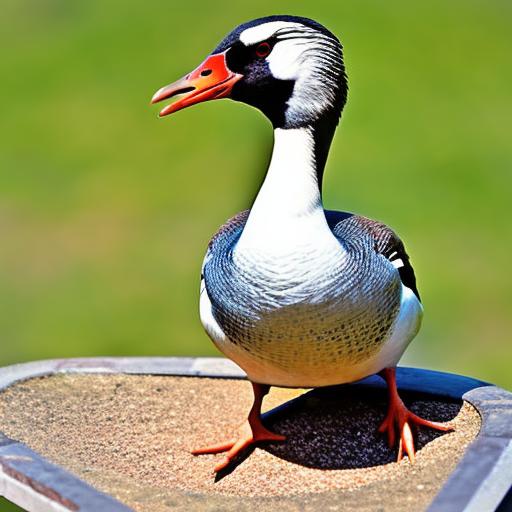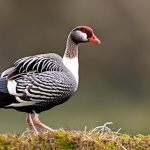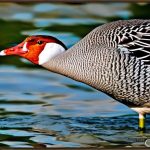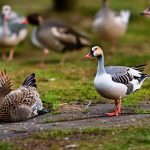Playgrounds are a vital part of any community, providing a safe and enjoyable space for children and families to play and have fun. However, the presence of geese can pose a threat to the safety and cleanliness of these spaces. In this blog post, we will discuss the importance of keeping geese off playgrounds and explore different methods for doing so.
Key Takeaways
- Geese can pose a risk to children and adults on playgrounds.
- Understanding geese behavior can help in developing effective methods to keep them away.
- Common methods for keeping geese away include noise, visual deterrents, and habitat modification.
- Physical barriers such as fences and netting can also be effective in keeping geese out.
- Educating children and adults about geese safety and working with local authorities can help manage geese populations and maintain a safe playground environment.
Understanding the Behavior of Geese
Geese are social animals that are attracted to open spaces with water and grass. They are known for their distinctive honking sound and their graceful flight patterns. However, they can also be territorial and aggressive when they feel threatened or when protecting their young. Understanding their behavior can help us develop effective strategies for keeping them away from playgrounds.
The Risks of Geese on Playgrounds
The presence of geese on playgrounds can pose several risks. Firstly, geese can leave behind droppings that can carry harmful bacteria and parasites. These droppings can contaminate the playground equipment and pose a health risk to children and adults who come into contact with them. Secondly, geese can become aggressive and attack if they feel threatened or if they perceive someone as a threat to their young. This aggressive behavior can pose a physical threat to children and adults using the playground. It is important to take steps to prevent geese from accessing playgrounds to ensure the safety and health of everyone who uses them.
Common Methods for Keeping Geese Away
There are several methods for keeping geese away from playgrounds. One common method is the use of decoys, such as fake predators or other animals that geese perceive as a threat. These decoys can be effective in the short term, but may not provide a long-term solution as geese can become accustomed to them over time.
Another method is the use of noise deterrents, such as loud noises or sirens. Geese are sensitive to loud sounds and may be scared away by these deterrents. However, noise deterrents can be disruptive to the surrounding community and may not be a practical solution in all situations.
Visual deterrents, such as reflective tape or scarecrows, can also be effective in keeping geese away from playgrounds. These visual deterrents create an environment that is unappealing to geese and can discourage them from landing or staying in the area. However, like other methods, visual deterrents may not provide a long-term solution as geese can become accustomed to them over time.
Installing Physical Barriers to Keep Geese Out
Installing physical barriers, such as fences or netting, can be an effective way to keep geese out of playgrounds. These barriers create a physical barrier that prevents geese from accessing the area. However, installing physical barriers can be costly and may require ongoing maintenance to ensure their effectiveness. Additionally, it is important to ensure that the barriers are installed properly to prevent any harm to the geese or other wildlife.
Using Repellents to Deter Geese

Repellents can also be used to deter geese from entering playgrounds. These repellents can come in the form of sprays or gels that are applied to the area where geese are not wanted. These repellents are safe for humans and geese but may need to be reapplied regularly to maintain their effectiveness. It is important to choose repellents that are specifically designed for use with geese and follow the instructions carefully.
Creating a Safe and Unwelcoming Environment for Geese
Making the playground environment less attractive to geese can also be an effective way to keep them away. This can be done by removing sources of food and water that may attract geese, such as open garbage cans or standing water. Additionally, landscaping the area to make it less appealing to geese can also be effective. This can include planting shrubs or tall grasses that create barriers or using landscaping materials that geese find unappealing, such as gravel or rocks.
Educating Children and Adults About Geese Safety
Educating children and adults about the risks of geese on playgrounds can help prevent accidents and injuries. This can be done through signage that explains the risks and provides guidelines for interacting with geese. Educational materials, such as brochures or pamphlets, can also be distributed to parents and caregivers to raise awareness about the issue. Community outreach programs, such as workshops or presentations, can also be organized to provide information and resources to the community.
Working with Local Authorities to Manage Geese Populations
Working with local authorities to manage geese populations can also be an effective way to keep them away from playgrounds. This can include measures such as egg addling, which involves shaking or coating goose eggs to prevent them from hatching. Relocation of geese to more suitable habitats can also be considered. In some cases, humane culling may be necessary to manage geese populations and protect public safety. It is important to work with local authorities who have the expertise and resources to implement these measures safely and effectively.
Maintaining a Safe and Enjoyable Playground for Everyone
Keeping geese off playgrounds is important for the safety and health of children and families. By understanding their behavior and implementing effective strategies, we can create a safe and enjoyable playground environment for everyone to enjoy. Whether it is through the use of physical barriers, repellents, or creating an unwelcoming environment for geese, it is crucial to take proactive steps to prevent geese from accessing playgrounds. Additionally, educating children and adults about geese safety and working with local authorities to manage geese populations can further contribute to maintaining a safe and enjoyable playground for everyone.
If you’re looking for more information on keeping geese off playgrounds, you might find this article on Poultry Wizard helpful. It discusses whether geese can eat chicken feed and provides insights into their dietary needs. Understanding what geese can and cannot eat can be crucial in developing effective strategies to deter them from playground areas. To learn more, check out the article here.
FAQs
What are the common problems caused by geese on playgrounds?
Geese can leave behind droppings that can be unsanitary and slippery, which can cause health hazards and accidents. They can also be aggressive towards children and adults, especially during nesting season.
What are some effective ways to keep geese off playgrounds?
Some effective ways to keep geese off playgrounds include installing physical barriers such as fences or netting, using noise deterrents such as loudspeakers or alarms, and using visual deterrents such as decoys or reflective tape.
Are there any humane methods to keep geese off playgrounds?
Yes, there are humane methods to keep geese off playgrounds. These include using natural deterrents such as planting tall grass or shrubs, using water deterrents such as sprinklers or water cannons, and using trained dogs to chase away geese.
What should I do if I encounter an aggressive goose on a playground?
If you encounter an aggressive goose on a playground, it is important to stay calm and avoid making sudden movements. Slowly back away from the goose and give it plenty of space. Do not attempt to feed or touch the goose, as this can provoke it further.
Why is it important to keep geese off playgrounds?
It is important to keep geese off playgrounds to ensure the safety and health of children and adults who use the playground. Geese can leave behind unsanitary droppings that can cause health hazards, and they can be aggressive towards people, especially during nesting season.
Meet Walter, the feathered-friend fanatic of Florida! Nestled in the sunshine state, Walter struts through life with his feathered companions, clucking his way to happiness. With a coop that’s fancier than a five-star hotel, he’s the Don Juan of the chicken world. When he’s not teaching his hens to do the cha-cha, you’ll find him in a heated debate with his prized rooster, Sir Clucks-a-Lot. Walter’s poultry passion is no yolk; he’s the sunny-side-up guy you never knew you needed in your flock of friends!







